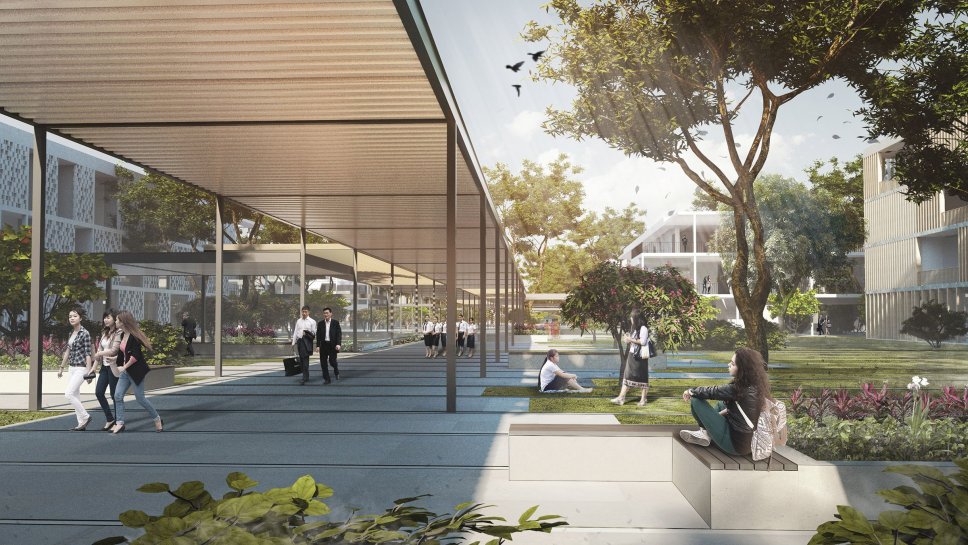Savannakhet
Masterplan Campus
University
Education, Residential
ADB, Asian Development Bank
MOES, Ministry of Education and Sports
SKU, Savannakhet University Committees
GFA app. 50.000 m²
2016
In creating a campus surrounded by forest, it was imperative that we highlighted the beauty and biodiversity of the site’s natural assets. And so the “genius loci” of the site was retained in order to construct a green experience for the campus users; one which offers perspective views into the forest, while also maintaining a sense of place and enclosure within the campus.
Hence, the campus is designed as a compact compound, with inner courtyards and interlinked-walkways that utilize all the benefits of its distinct place within the forest.
Proposed as a highly flexible system, the faculty buildings allow for versatile adaption to changing needs. In order to facilitate adaptability, its structure is designed such that partitions and department layouts can be easily modified. Since resources are shared amongst departments—open labs, informal offices and meeting rooms offer students and teachers the opportunity for cross-disciplinary work.
The faculties themselves contain lush garden patios that are decorated by water features, and protected outdoor spaces that offer a variety of green getaways to ameliorate the climate. At the same time, a botanical path weaves through the campus and serves as a learning experience in indigenous vegetation. Similarly, a “Champa Tree Alley” along the central axis of the university showcases the different varieties of its species across the campus.
In addition to connecting various faculty buildings, the canopies also house academic infrastructure and function as a flexible learning space that caters to all departments. Together, they form a network of “learning streets” which allows students and teachers to interact.
Importantly, both urban and architectural designs carefully factor the tropical climate into consideration. As a result, the volumes of buildings are punctuated with a generous amount of porosity, securing an essential combination of natural ventilation and climate-adaptive buildings.
